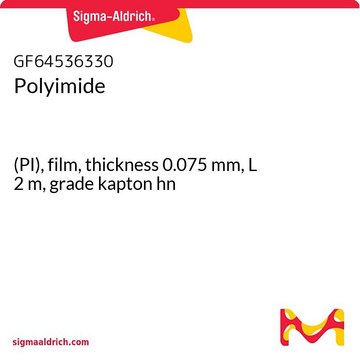07072001
ES-R1 from mouse
07072001, mouse embryo. Monolayer of spheroidal cells on feeder layer of PMEFs.
About This Item
Produtos recomendados
product name
ES-R1 from mouse,
fonte biológica
mouse embryo
Nível de qualidade
forma
liquid
modo de crescimento
Adherent
cariótipo
Not specified
morfologia
Adherent monolayer of spheroidal cells on feeder layer of mouse primary embryonic fibroblasts
produtos
Not specified
receptores
Not specified
técnica(s)
cell culture | mammalian: suitable
Condições de expedição
dry ice
temperatura de armazenamento
−196°C
Origem de linhagem celular
Descrição de linhagem celular
Meio de cultura
KSR medium consists of KO-DMEM (Gibco 10829), 20% Knock-Out Serum Replacer (Gibco 10828), 2 mM Glutamine (Invitrogen 25030024), NEAA (Invitrogen 11140035), 0.1 mM ß-mercaptoethanol (Sigma M6250) and LIF 1000 Units/ml (ESGRO ESG1106).
Rotina de subcultura
Porcine gelatine (Sigma G1890) is dissolved in sterile water (0.5 g/500 ml) at 56 °C. The 0.1% solution is sterilized by filtration (0.22 μm). Add 0.1% gelatine to plastic ware to cover bottom, and incubate for 20 minutes at room temperature. Remove gelatine, wash with PBS once and replace with appropriate culture medium. The flask/dish must not be allowed to dry out.
Feeder layers are prepared on the gelatinized flasks at least 24 hours in advance of being required. An ampoule is thawed in 37 °C water bath and the contents quickly transferred to a 15 ml centrifuge tube. MEF medium is added drop wise to 5 ml. Cells are centrifuged at 150 x g for 5 minutes at room temperature (RT). Cells are resuspended in 5 ml of MEF medium. Cells are counted and added to flasks containing the correct medium at 1-3 x 104 cells/cm2.
An ampoule of ES cells is thawed in 37 °C water bath and the contents quickly transferred to a 15 ml centrifuge tube. KSR medium is added drop wise to 5 ml. Cells are centrifuged at 150 x g for 5 minutes. Cells are resuspended in 5 ml of KSR medium. The prepared feeder flask is washed once with PBS and KSR medium added. ES cells should be plated at 4-5 x 104 cells/cm2. Cultures must be incubated in a humidified 5% CO2/95% air incubator at 37 °C. A 100% media change must be performed every day and cells passaged every 2-3 days. Colonies must not be allowed to touch each other as overgrowth will result in differentiation.
Outras notas
Código de classe de armazenamento
10 - Combustible liquids
Classe de risco de água (WGK)
WGK 3
Ponto de fulgor (°F)
Not applicable
Ponto de fulgor (°C)
Not applicable
Certificados de análise (COA)
Busque Certificados de análise (COA) digitando o Número do Lote do produto. Os números de lote e remessa podem ser encontrados no rótulo de um produto após a palavra “Lot” ou “Batch”.
Já possui este produto?
Encontre a documentação dos produtos que você adquiriu recentemente na biblioteca de documentos.
Nossa equipe de cientistas tem experiência em todas as áreas de pesquisa, incluindo Life Sciences, ciência de materiais, síntese química, cromatografia, química analítica e muitas outras.
Entre em contato com a assistência técnica